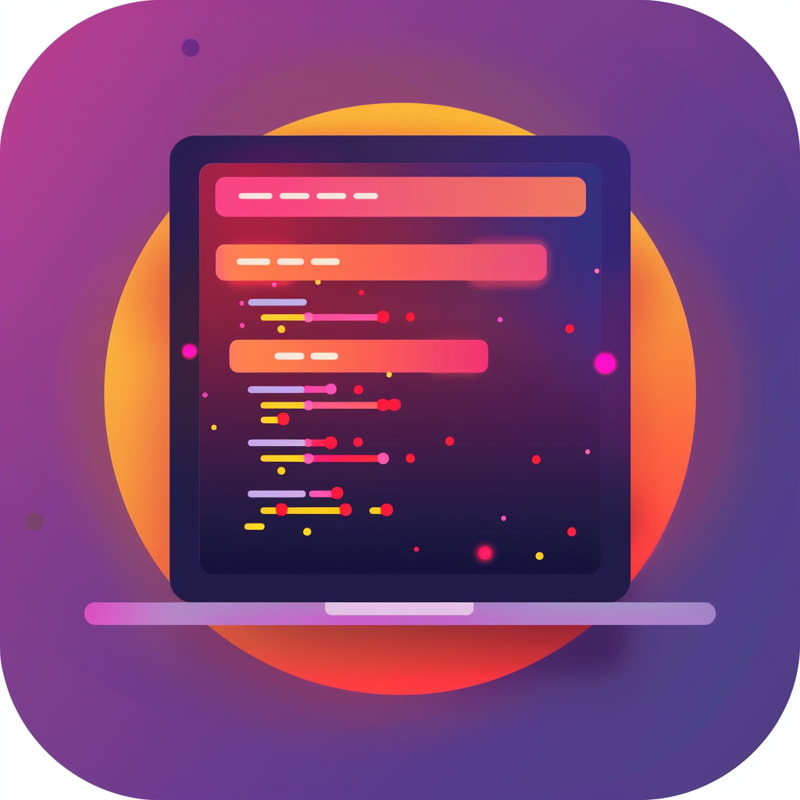Selenium Interview Questions and Answers
Selenium is an indispensable software testing tool that empowers testers to automate web browser interactions.
Users of Selenium can create and execute test scripts which simulate user actions to verify correctness in web applications. Selenium interview questions will help you prepare for an interview.

1. What is Selenium?
Selenium is a tool for automating web applications.
2. What is Selenium used for?
Selenium is used for web element search and synchronization commands.
3. What is the primary objective of Selenium?
Selenium supports several programming languages and operating systems, allowing testing on Windows, Mac, Linux, and Ubuntu. Selenium ID, a basic integrated development environment, Selenium RC, a remote control, and the Selenium web driver make up the suite.
4. What is Selenium IDE?
Selenium IDE is an integrated development environment (IDE) that enables users to record and run test cases. It is a plugin for Firefox and Chrome.
5. What’s the main distinction between Selenium IDE and Selenium WebDriver?
Selenium IDE is a browser-specific IDE, but Selenium WebDriver includes a more extensive set of functions and may be used with any browser.
6. What is the function of a driver in Selenium WebDriver?
A driver in Selenium WebDriver is a Java class that serves as an interface between the browser and the Selenium WebDriver.
It executes browser instructions, manages browser sessions, and handles browser events.
7. What is Selenium WebDriver architecture?
Selenium WebDriver has Java, C#, Python, Ruby, and PHP bindings, it tests programs in diverse contexts, operating systems, and browsers using a grid design.
8. What function does Selenium WebDriver play in testing web applications?
Selenium WebDriver automates web applications, performs assertions, validates programs, and compares expected and actual outcomes.
9. Why do Selenium web drivers have six get commands?
The Selenium web driver connects to the real browser without disclosing its logic. The browser driver receives an HTTP request for each command in a test script.
10. What are the Selenium web driver’s eight element locating techniques?
Selenium offers eight element-locating techniques, including ID, link text, transmit keys, and click.
These methods recognize site components like search boxes and buttons.
11. What are Selenium’s web driver limitations?
Selenium cannot test mobile apps, which require APM. However, it allows Selenium-APM integration for mobile app automation.
12. What is the main advantage of the Selenium web driver?
The web driver is easy to use and maintain since it communicates without a server. It also offers more mature and easier API instructions like clicks, send keys, and web page scrolling.
13. What is the Selenium grid?
The Selenium grid is a tool designed to run multiple test scripts on multiple machines simultaneously.
14. What is the main objective of the Selenium grid?
The main objective of the Selenium grid is to distribute commands on multiple machines where you want to run tests and execute them simultaneously.
15. How does Selenium grid work?
The Selenium grid has a master machine or hub setup with a Selenium standalone server and numerous nodes based on machine needs.
16. What is Eclipse?
Eclipse is a software development environment used for developing web, mobile, and enterprise applications.
17. How can I set up a Selenium project in Eclipse?
To establish a Selenium project in Eclipse, select “new Java project” and call it “Selenium first project.” You can then customize the build route by selecting “libraries” and “add external jars.”
Select all of the Selenium jar files and open them in the “Library” section. Identify the necessary jar files, apply them, and then close.
18. Why does Selenium have a robot class?
Selenium’s robot class automates online and desktop keyboard and mouse activities.
19. What is the robot class built with?
Java makes the robot class platform neutral and easy to integrate with SQL and ITT web driver.
20. What tasks can the robot class perform?
The robot class can perform tasks such as entering data from Excel, clearing old information, and launching the browser.
21. What obstacles does the robot class have?
One obstacle of the robot class is that it may not consider which application is active when performing actions, so actions will be performed on any application that is active on that application.

Selenium Training

The robot class is used in scenarios where the Selenium web driver cannot handle tasks, such as when inspecting web or desktop elements.
23. What defines the robot class from Selenium web driver?
The robot class automates keyboard and mouse actions, whereas Selenium web driver automates browser activities.
24. Why do robot classes have string selection and toolkit classes?
The string selection and toolkit classes save data to the clipboard for easy copying and pasting.
25. What are the main components of the Selenium suite of tools?
Selenium’s core tools include IDE, RC, web driver, and grid.
The web driver is the most important component of Selenium, acting as a programming interface to create and execute test cases, the grid is used to run multiple test scripts on multiple machines at the same time, and the IDE is a record and playback tool for prototyping.
26. Why is Selenium IDE used?
Selenium IDE records and plays back test cases, manages test execution speed, and creates and manages projects.
Controlling speed and grading helps users run automation programs efficiently.
27. What is the high-level architecture of Selenium?
The high-level architecture of Selenium includes creating test scripts in any supported language, such as P.H.P., Java, or Python, and starting an RC server.
This server interprets Selenium instructions and delivers results to the test. RC server functions as a proxy between test script and browser, enabling full communication.
28. What distinguishes Selenium RC from the web driver?
Selenium RC requires an RC server installation before executing test scripts and has slower execution time owing to the whole journey from the test script to the RC server, core engine, and browser.
The web driver, which does not need a core engine and may execute sequentially, is simpler and quicker.
29. What are the limitations of Selenium?
Technical support for mobile and desktop applications is restricted by Selenium. It is not suitable for image testing, but it can integrate tools like AutoIT and SQL.
30. What is parallel testing in Selenium?
Parallel testing allows for cross-browser testing and execution of test suites on multiple browsers.
31. What is the Integrated Development Environment (IDE)?
The Integrated Development Environment (IDE) is a software development environment that integrates multiple software development tools, such as code editors, debugging tools, and testing tools, into a single application.
32. What is the use of the programmatically debugger command in Selenium ID?
After entering the password, the program enters debug mode and pauses the script, allowing you to use the debugger command to perform the same job as adding breakpoints.
33. What is the debug pause on exception feature in Selenium ID?
The debug pause on exception feature in Selenium ID pauses the script execution when an exception is found, allowing the script to enter debug mode and correct the issue.

34. How does the debugger in Selenium ID work?
The debugger in Selenium ID offers multiple functionalities, including step execution and breakpoints.
You can execute all steps one after the other from your script by clicking anywhere in the script.
You can also add a breakpoint by clicking on it or using a toggle breakpoint. To remove a breakpoint, right-click on the command and select the toggle breakpoint again.
35. What is the difference between step execution and breakpoints in Selenium ID?
In step execution, all steps are executed one after the other from your script.
You can control the execution of each step by clicking anywhere in the script. Breakpoints, on the other hand, allow you to pause the execution of the script at a specific point.
36. How do you disable breakpoints in Selenium ID?
To disable breakpoints in Selenium ID, you can select the “disable breakpoint” option, which ignores all breakpoints until the disabled breakpoint is selected.
After enabling the disabled breakpoint, the test will continue execution.
37. What is the debug pause on exception feature in Selenium ID?
The debug pause on exception feature in Selenium ID pauses the script execution when an exception is found, allowing the script to enter debug mode and correct the issue.
38. What is JavaScript executors in Selenium web drivers?
It is used to perform various functionality, such as minimizing, maximizing, or setting a different size to a browser window.
39. Why are Python control flow statements used?
Python control flow statements change code execution order. Looping and conditional branching are examples.
40. How do you use the while loop in Python?
In Python, the while loop is used to repeatedly execute a block of code as long as a condition is true. The loop continues until the condition is met or the loop is exited using a break statement.
41. How do you utilize Python’s for loop?
In Python, for loop is used to cycle through a sequence or collection of elements. The loop variable accepts the values of each item in the sequence or collection, allowing you to do different actions on each one.
42. How does the Python if-else statement work?
In Python, the if-else statement may be used to conduct various actions based on the value of a condition. If the condition is met, the code within the if-block is run. If the condition is false, the code in the else block is run.
43. What command is used to identify a web element in Selenium?
The driver dot find element by dot ID command is used to identify a web element in Selenium.
44. Why use Selenium weights?
Selenium uses weights to load site components before acting on them. They prevent errors too.

Selenium Online Training

The three types of weights available in Selenium are implicit, explicit, and fluent.
46. Why do Selenium implicit weights exist?
Implicit weights tell the browser to wait before throwing an exception; default is zero.
47. What is the point of using explicit weights in Selenium?
Explicit weights await specified circumstances before throwing an exception, such as element visibility.
48. What is the aim of employing Fluent Weights in Selenium?
Fluent weights, like explicit weights, wait for a condition and a frequency to check before throwing an exception.
Fluent weights provide the maximum length of time the web driver should wait for a condition while polling every second.
49. How many types of locators are available in Selenium?
There are around eight locating techniques in Selenium, including ID, link text, partial link text, name, XPath, and CSS selector.
50. What is the most common way of locating elements in Selenium?
The most common way of locating elements in Selenium is by using ID.
51. How do you use the JavaScript executor in Selenium?
To utilize the JavaScript executor in Selenium, use the JavaScript executor interface, which enables JavaScript execution via the Selenium web driver.
It has two options: execute script or run its racing script. This is helpful for tasks that cannot be accomplished using locators, such as scrolling along a web page or recognizing web items.
52. What does a Java constructor do?
When an object is formed, a Java constructor initializes its state. Initialization tasks are performed by it automatically when an item is created.
53. Why does Java’s get method exist?
The get method in Java retrieves an object’s property value. This function returns the property’s value when called with its name.
54. What is JavaScript executors in Selenium WebDrivers?
It is used to perform various functionality, such as minimizing, maximizing, or setting a different size to a browser window.
55. Why are JavaScript loops used?
Implement web element functionality or test case logic.
56. What is CSS (Cross-Selector)?
CSS (Cross-Selector) is a method for identifying elements in an XPath application. It can be used to identify elements based on their tag name, class attribute, and other attributes.
57. Why use Selenium CSS selectors?
CSS selectors identify elements by HTML tag, ID, class, or other properties. They increase test script speed and work quicker than XPath.
58. How do you use the page object model (POM) in Selenium?
The page object model (POM) design pattern builds web element object repositories, making code more legible, manageable, and reusable.
Use Selenium’s page factory or objects and classes to implement it. Capture protects sensitive data from bots and automated applications. Not automating the difference between people and computers is crucial.

“Mastering Selenium with Multiple Choice Questions: Your Path to Success!”
1. What is Selenium?
a. Tool for automating manual testing of web applications
b. Programming language used for creating web applications
c. Testing framework for automating testing of web applications
d. Database management system used for storing and retrieving data
2. What are the primary benefits of using Selenium for web testing?
a. Faster test execution
b. Improved test coverage
c. Greater flexibility in test scripting
d. Reduced testing costs
3. Which programming languages does Selenium support for creating test scripts?
a. Java, Python, Ruby, C#
b. Java, Python, Ruby, PHP
c. Java, Python, Ruby, C++
d. Java, Python, Ruby, JavaScript
4. What is the purpose of the Selenium WebDriver?
a. Execute test scripts on a web browser
b. Create web applications
c. Manage test data
d. Monitor web performance
5. What is Selenium used for?
a. Debugging software
b. Creating web applications
c. Writing code in Java
d. Testing web applications in different browsers
6. Which language is used for writing Selenium code?
a. Python
b. Ruby
c. Java
d. JavaScript

Conclusion
Interview Questions for Selenium and Java requires possessing an in-depth knowledge of both technologies, as well as their integration and application in testing web applications.
Selenium is an immensely powerful tool for automating web testing, offering features and capabilities suitable for functional, performance, and security testing scenarios.
Selenium and Java include web driver configurations, test scripting and automation frameworks.

Selenium Course Price


Deepthi
Author